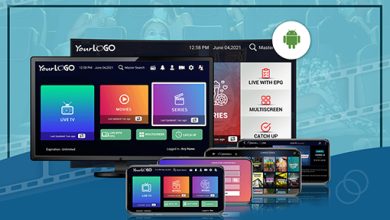How does a UI UX Design Company Do UX for Wearable Devices?

Wearable devices are the most popular thing since smartphones, and there’s no doubt that it is a cutting-edge technology. Now that there are multiple companies making smartwatches and minting on the same, let’s talk about how a UI UX design company devises a roadmap to a great user experience for wearable devices.
Affectionately called wearables, you need to take a different approach with these devices, than traditional web or mobile UX design. This difference plays an important role while designing for various devices or for other external devices as the features of wearables are quite compact and precise as that of a smartphone. Given that it is one of the most unique forms of UX – one that combines web-based UX with traditional user experience, the effort goes beyond creating the physical product.
Table of content
- How does a UI UX design company define the user persona of wearable devices?
- The main features of wearable devices
- Why are wearable devices appealing to users?
- Key things to keep in mind while doing UX for wearable devices.
- Conclusion
7 COMMON MISTAKES TO AVOID WHILE CHOOSING A WEB DESIGN COMPANY
How to define the user persona of wearable devices?
A user persona is a fictional representation of a specific type of user that a product or service is designed for. To define a user persona for wearable devices, a UI UX design company gathers information about the target audience through various research methods such as surveys, interviews, and focus groups.
Here are a few key pieces of information that one might want to gather when creating a user persona for wearable devices:
- Demographics: age, gender, education level, income, occupation, etc.
- Goals and motivations: what are the user’s reasons for wanting to use a wearable device?
- Pain points and frustrations: what problems does the user currently have that a wearable device could solve?
- Behavioral patterns: how does the user typically use technology, and how does that usage fit into their daily routine?
- Device preferences: what type of wearable device does the user prefer?
Once the UI UX agency has gathered this information, you can use it to create a detailed and specific user persona that will inform the design and development of your wearable device.
How to Design an Eye-Catching Logo for Your Company
The Main Features Of Wearable Devices
The main features of wearable devices can vary depending on the specific device and its intended use, but some standard features that a UI UX design company includes are the following:
- Fitness and health tracking: Many wearable devices come equipped with sensors and software that can track things like steps taken, calories burned, heart rate, and sleep patterns.
- Connectivity: Wearable devices often connect to smartphones or other devices, allowing users to receive notifications, control music or other apps, or receive calls and messages.
- Voice and gesture control: Some wearable devices allow users to control them using voice commands or hand gestures.
- Personalization: Wearable devices can be personalized to suit the user’s preferences and habits, such as reminders, alarms and notifications.
- Mobile Payment: Some wearables have the ability to make mobile payments, such as smartwatches and fitness bands.
- GPS: Some wearables have GPS capabilities, which allow them to track location and provide navigation assistance. This is a crucial feature that any UI UX design company should include.
- Media Control: Some wearables have the ability to control media and play music, videos, or podcasts.
- ECG/EEG Sensors: Some wearables have the ability to monitor heart rate and brain activity.
- Battery life: Wearable devices can last for a few days to even a week, depending on the usage and the device.
- Water resistance and dustproof: Many wearable devices are designed to be resistant to water and dust, so they can be worn while swimming or doing other activities.
The Next Big Thing in Logo Design Company in Kolkata
Why Are Wearable Devices Appealing To Users?
Wearable devices appeal to users for various reasons, including convenience, personalization, and the ability to track and monitor important health and fitness metrics. Additionally, many wearables can be integrated with smartphones and other devices to provide notifications and other useful information, making them a convenient and easy-to-use tool for staying connected and informed. Additionally, many wearables have become more stylish and fashionable, making them more appealing to a wider range of users.
MunkongSEO Company SEO Service Website Design Online marketing
Key Things To Keep In Mind While Doing UX For Wearable Devices

When a UI UX design company is designing the user experience (UX) of a wearable device, there are several vital things to keep in mind:
- Context of use: The context in which the wearable device will be used is crucial to the UX design. Consider the user’s environment, physical constraints and limitations, and the specific tasks they will be performing while using the device.
- Limited screen space: Wearable devices often have smaller screens than smartphones or tablets, so the UX should be designed to make the most of the limited screen space available. This may involve using simple, clean layouts and large, easy-to-read text.
- Interaction methods: Wearable devices often rely on alternative interaction methods such as voice commands or gesture controls, rather than touchscreens. These methods should be intuitive and easy to use.
- Accessibility: Wearable devices should be accessible to users with disabilities, such as those who are visually impaired or have limited dexterity. This may involve providing audio cues or alternative interaction methods. A UI UX design company should keep accessibility as a priority.
- Personalization: Wearable devices can be highly personalized, allowing users to customize the interface and settings to suit their needs. The UX should make it easy for users to personalize their device.
- Battery life: Wearable devices rely on battery power, so the UX should be designed to minimize power consumption and extend battery life.
- Data privacy: Wearable devices often collect and transmit sensitive personal data, so it’s important to design the UX with privacy in mind, providing clear and transparent data usage policies and giving users control over their data.
Web Design Company In Amravati
Conclusion
Wearable devices are definitely here to stay. It’s just a matter of time until they become equipped with new features and push the interaction to the next level. However, once we get there, we will witness a user experience like no other. In conclusion for all UX designers, this will be an interesting tech to design since they will have to consider many new things such as:
- Interaction with other physical devices and their Interface: A UI UX design company can’t keep the same layout and gestures found on other devices. The agency would require the users to interact with both their smart device and the wearable.
- Activity the user is performing like sleeping, sitting, walking, running or working out. The device should not crash while the user is doing various activities.
- Environment where the user is present in such as subways, gyms, coffee shops or libraries. A UI UX design company should offer them cues like blinking, vibrating or a different sound to inform them they have received a notification. Which one of these would you use for crowded environments where it is hard to see or maybe hear? Will you offer similar cues on their phone as well or will you restrict the cues to the wearable device?
These are just a few questions that UX designers will need to think about when designing for these type of devices. One thing is for sure, wearable devices are among us, and the future looks bright with and for them!




